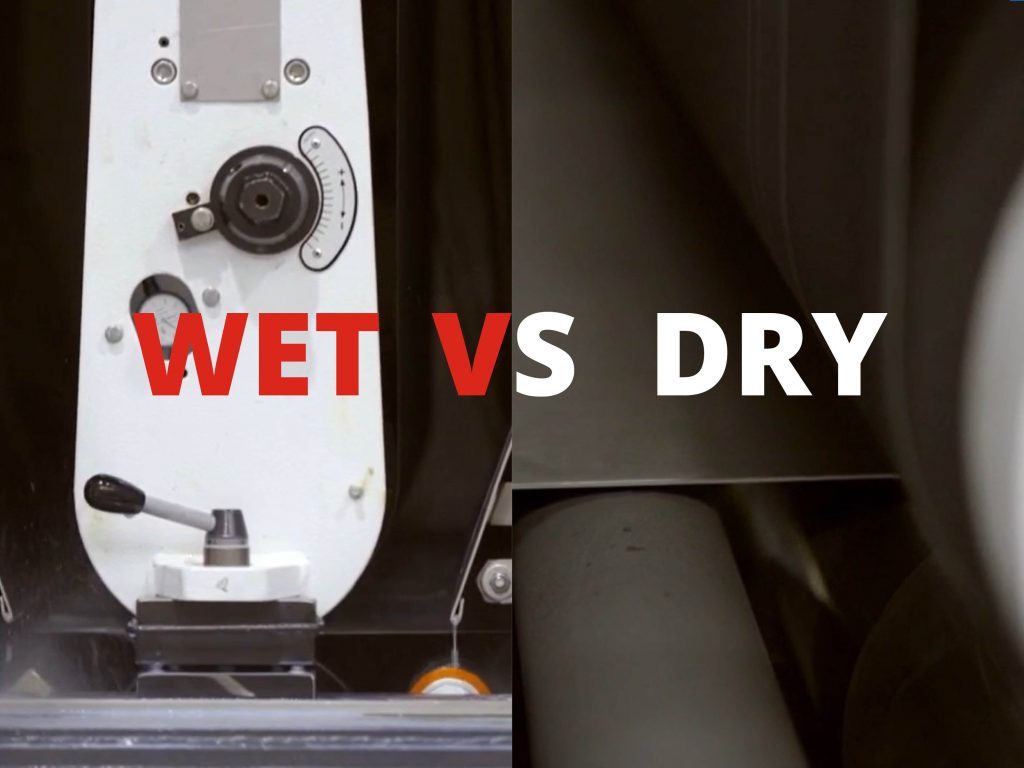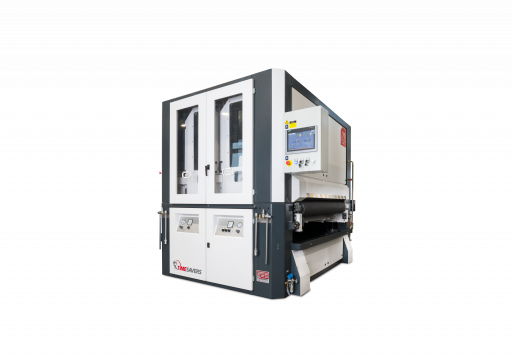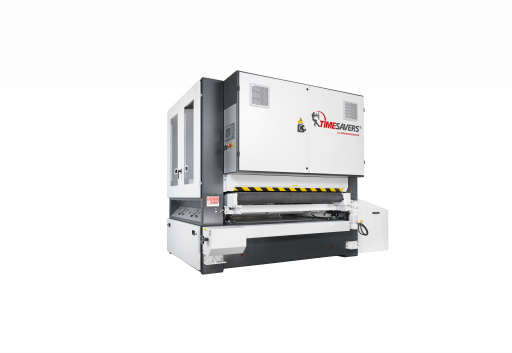There are several types of machines for deburring and finishing of sheet metal. Before choosing a machine, it is necessary to consider whether a wet or a dry machine is preferred for your production process. It can be difficult to compare and weigh out the advantages and disadvantages. Therefore, we hope this information will help you in making this important decision.
Deburring
In some occassions a wet machine is preferable:
- Materials: The most important reason to choose a wet machine, is that the user can safely process a mix of materials without risk of flammable or explosive situations, arised by dust or sparks.
- Aluminium: While processing aluminium products in a wet process, the surface remains smoother and there is lesser risk on skin deformation such as orange peel – sheet metal that has the appearance of the surface of an orange.
- No deformation: Pieces are cooled during the process and therefore less hot, thus preventing deformation of the products.
- Corrosion: By using the right coolant, the processed products are protected from corrosion by the special additives.
- Coolant: The coolant chemicals are vital for the best machine performance.
For most situations a dry operating machine is the best solution:
- Materials: Dry operating machines can be used to proces various metals and even plastics. For some metals an extra cleaning procedure or second set of brushes is recommended.
- Extractor: This type of machine is to be supplied with a wet or a dry dust extractor. Wet extractors use water to gather dust and cool down possible hot sparks. These are most commonly used.
- Lifespan: The lifespan of such a deburring machine is twice as long when compared to a wet machine.
- Costs: Purchase and operation costs are less for a dry machine, when compared to a wet machine.
- Maintenance: The dry machine requires less maintenance, less frequently.
Finishing
The wet and dry finishing machines produce different results. Timesavers wet working finishing machines are recommended in the following situations:
- Various thicknesses metal: The machine is capable to process sheets, plates and coils of various thicknesses.
- Materials: A wet working machine is optimal for processing various types of materials or foiled parts.
- No deformation: With a dry working machine thick metal sheets could bend due to warmth in the process, whereas in a wet working machine, the coolant prevents the sheets from bending by cooling them.
- Finish: The finish is shinier than that of sheets produced in dry processes. Because the coolant is in between the finishing unit and the product, the processing is more executed on the surface.
- Titanium: For metals such as titanium it is preferable to process these in a wet situation, because the dust of this metal is highly flammable. It is much safer to cool them.
- Water filter: It has a built-in water filter unit and reduces the chances of flammable situations with hot sparks and fires.
- Long lasting: The metal sheets last longer thanks to the cooling and lubricants that are used.
Last but not least, we would like to address some points regarding the dry working machine.
- Thin metal: A dry working machine is best applicable for thin metal sheets.
- No deformation: The thin metal sheets do not bend because the heat is not fully absorbed by the metal, whereas thick metal would absorb the heat and would risk deforming.
- Roller table: The roller table makes it possible to process thin metal sheets from 0.5 mm.
- Extractor: Since it comes with an external dust extractor, it takes up more space than a wet machine.
To conclude, dry working machines have a longer lifespan, lower costs and need less maintenance for deburring or finishing. On the contrary, belts of wet working machines have a longer lifetime, no risk of deformation and they processed materials achieve a shinier surface look.
For any questions, contact our sales department. They will gladly help you with finding the right solution for your products.


